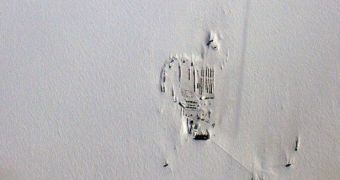Scientists at NASA announced that during their latest flight of the IceBridge mission, an airplane carrying climate experts and scientific equipment made its way near the South Pole. The flight was carried out using a modified DC-8 airplane.
The American space agency will conduct the IceBridge mission for a total of six years, and this is only the fourth. During the investigation, the aircraft will fly over Antarctica, the Arctic and Greenland, in a bid to make sense of the changes affecting glaciers and ice sheets.
The DC-8 is a critical part of that effort, as is the team of climate investigators NASA has pieced together to learn more about global warming and climate change. The agency says that the 2010 observations will be conducted exclusively over Antarctica.
Weather forecasters were unsure whether the recent flight will take place, given that stormy conditions were brewing in the area. Eventually, all cloud cover dissipated, and the NASA aircraft took off, Our Amazing Planet reports.
The sortie was conducted along the arc drawn on the map by the 86 degrees south latitude line, which is precisely where the aircraft flew last year as well. Conducting year-to-year comparative studies is extremely important, because this is the main way to detect changes in the areas being surveyed.
Using the Land, Vegetation and Ice Sensor (LVIS) instrument on the DC-8, the IceBridge team was capable to map the entire surface of the ice sheet over which it flew. The sortie lasted for 12 hours, which left researchers with ample time to collect all the data they needed.
Additionally, scientists also tested the functionalities of the MCoRDS radar, which was developed by the Kansas University ,and a NASA airborne topographic mapper, which was designed and built at NASA.
One of the most important objectives of the new flight was to collect information that could be compared with the ones gathered by the Ice Cloud and land Elevation Satellite (IceSat). This will help climate experts determine whether computer models that relied on IceSat data are accurate or not.
Initially, the team had some trouble operating the LVIS laser, as ice had build up on its mirrors. But eventually they overcome the problem, and went on to cover some 90 percent of their planned flight path.
Investigations will continue at the South Pole over the coming weeks. Stay tuned on this space for more on this.

 14 DAY TRIAL //
14 DAY TRIAL //